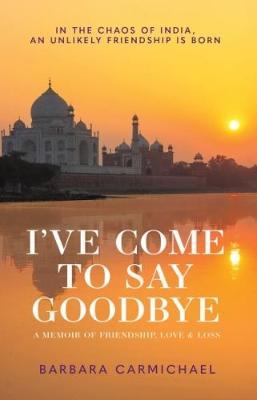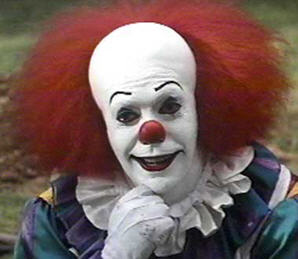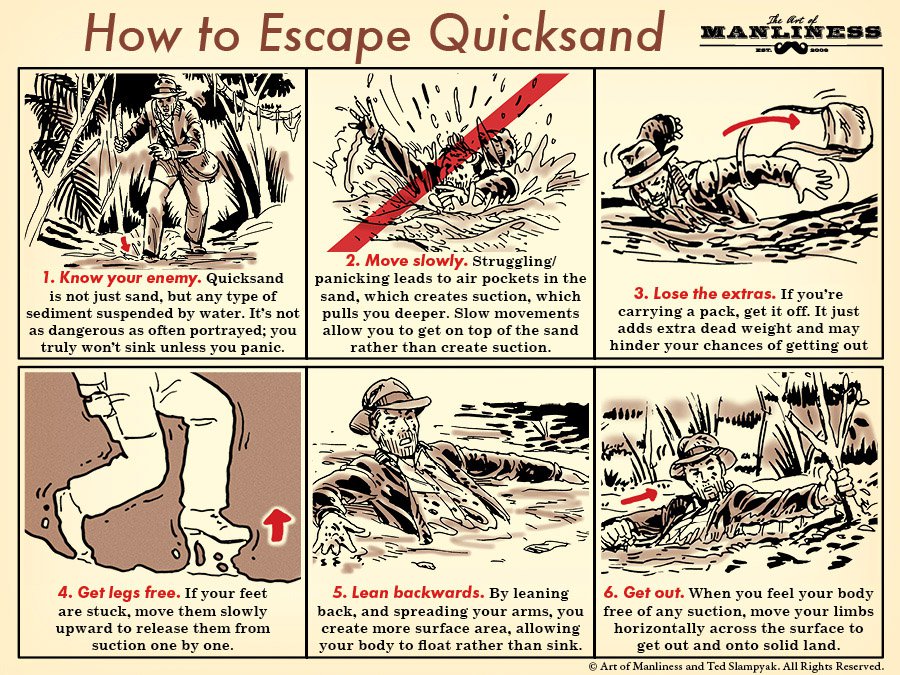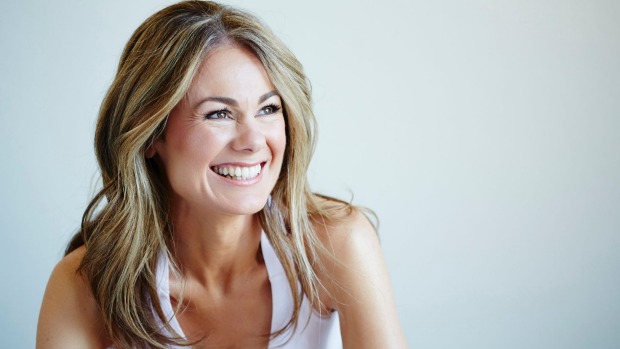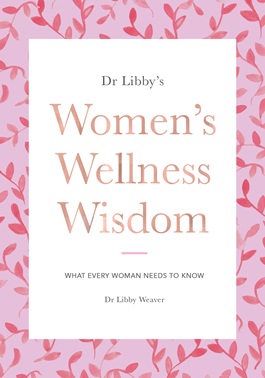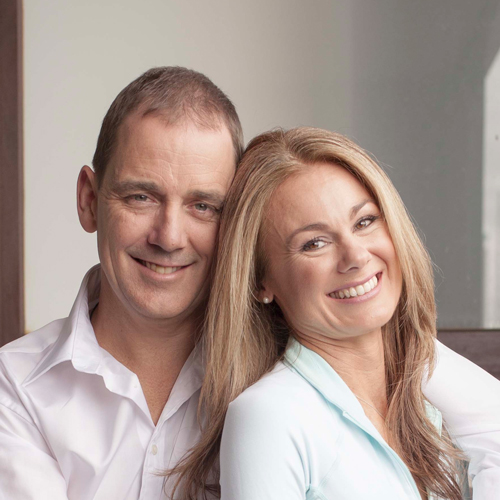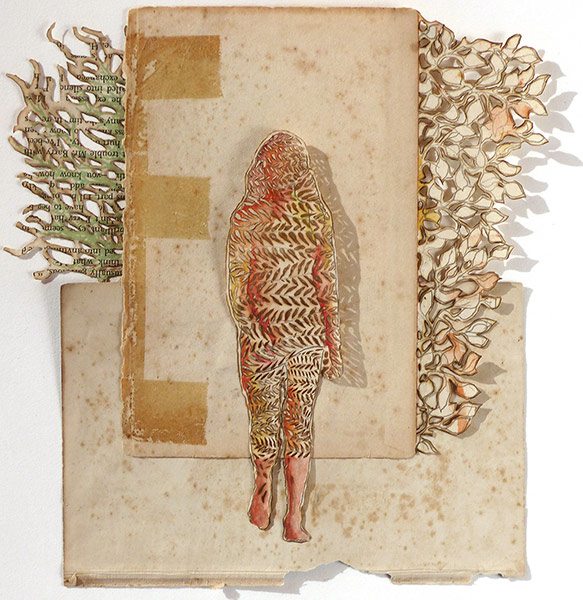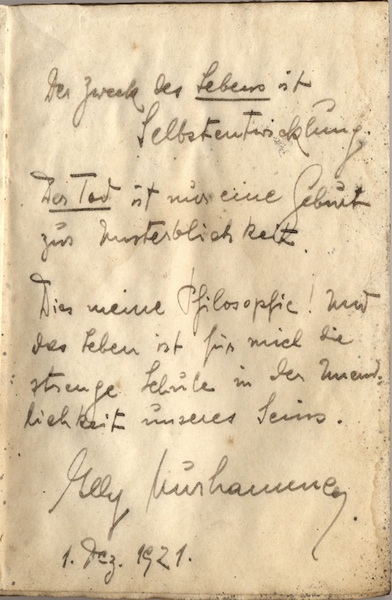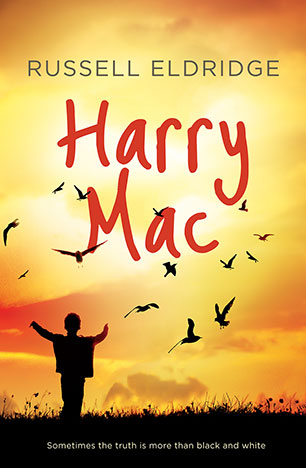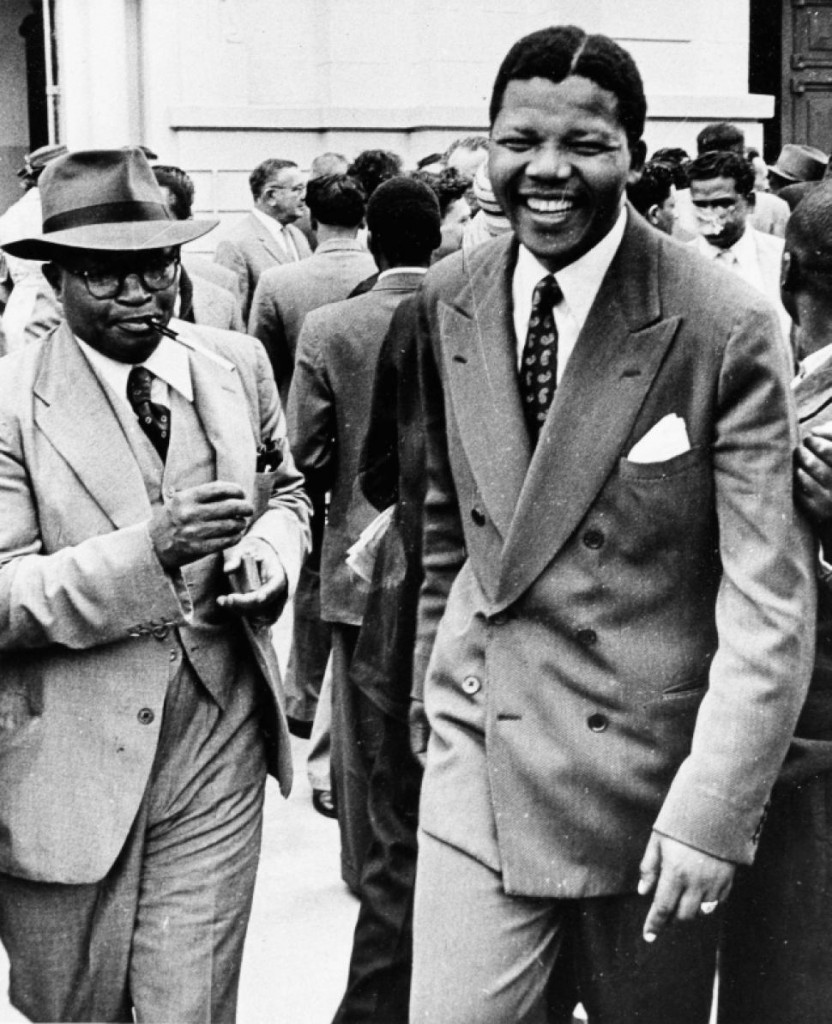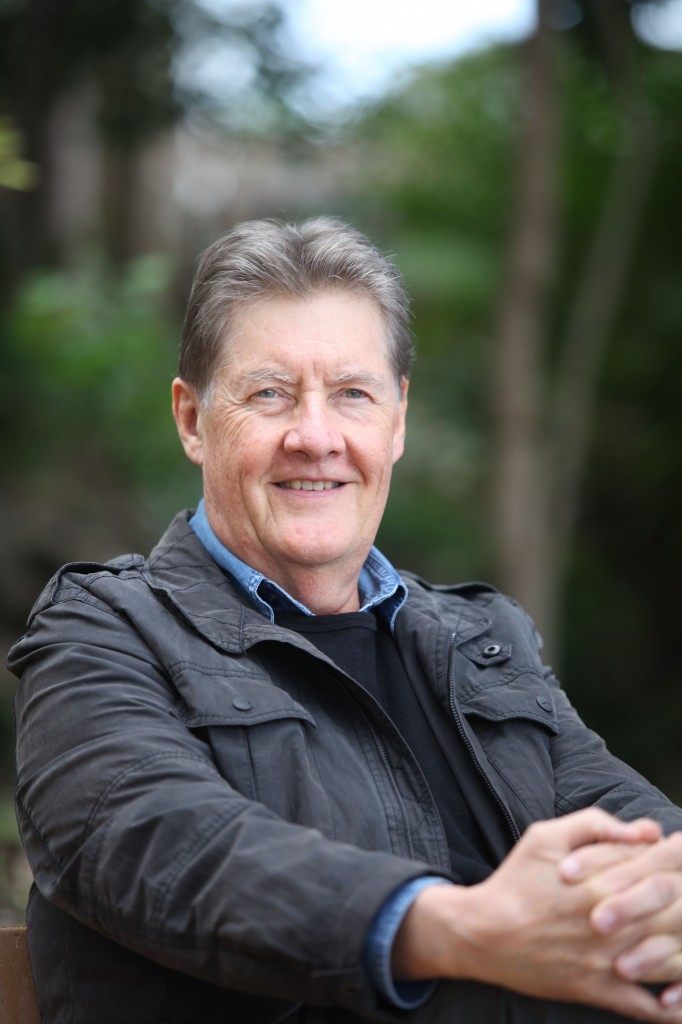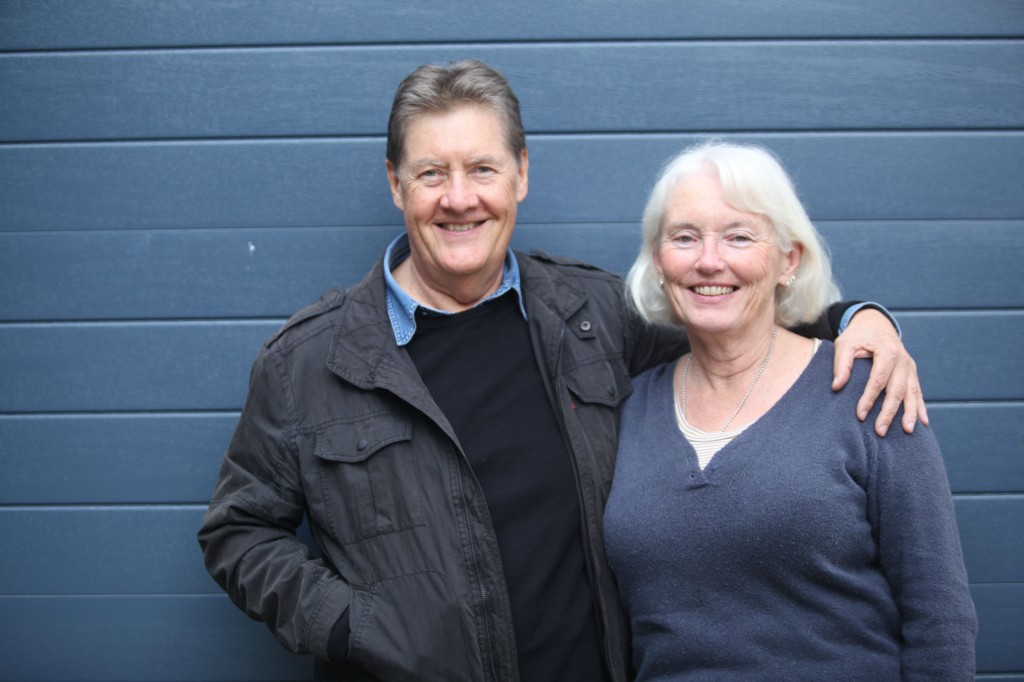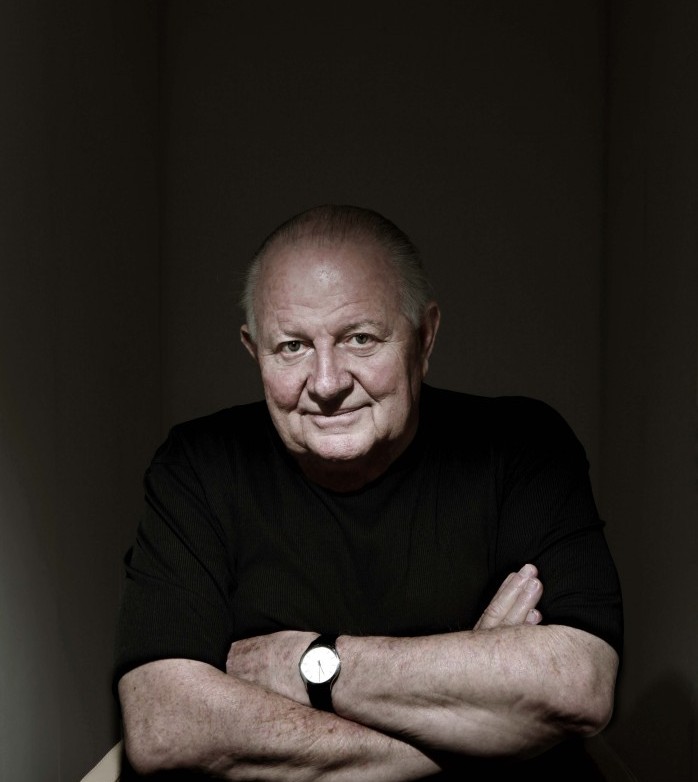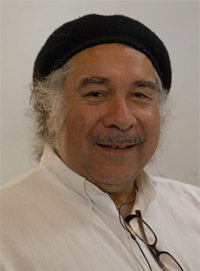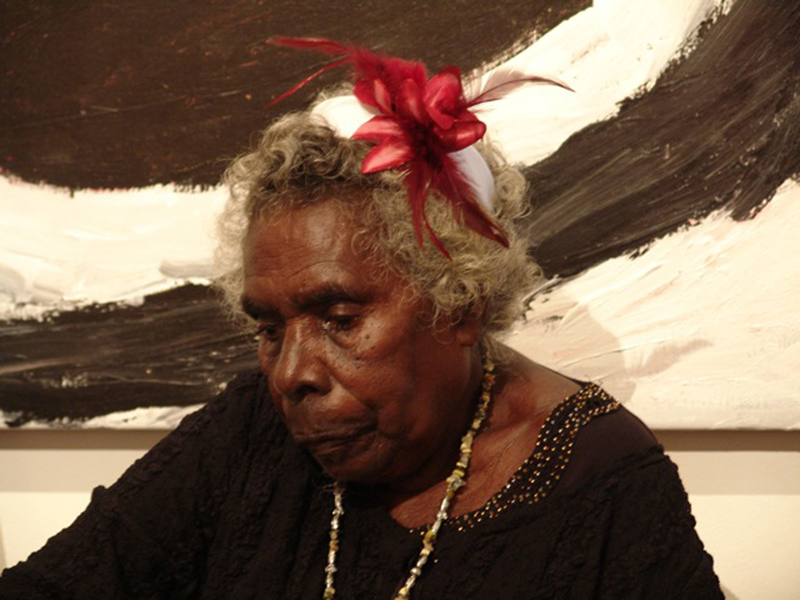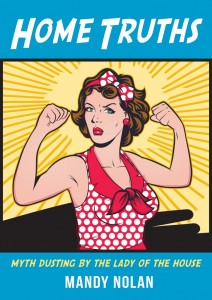The post Barbara Carmichael’s memoir of love and friendship in India appeared first on .
]]>Local Byron-based writer Barbara Carmichael’s I’ve Come to Say Goodbye is first and foremost a love story. A story of hearts that come together and bind in seemingly improbable circumstances. It’s not a romantic love story and yet the whole travelogue is a romantic adventure. The style is refreshingly simple, conversational and honest. Most memoirs written about a deep connection with India will usually take you on an overt spiritual quest. There’s the lost western soul searching for the meaning of life who happens upon a saviour (Guru) who invariably will abuse their power, but this book is more subtle than that. It gradually reveals the author’s own personal growth without any of spiritual clichés and claptrap.
Barbara’s preconceived ideas and western prejudices are slowly dissolved when she meets Tarun, a local man from Udaipur, whilst she’s accompanying a friend on a buying trip.
Thus unfolds a memoir of simple human connections which expand over a ten-year period. It feels sacred without exploiting any religious or spiritual clichés and in relegating God and religion to the sidelines there is plenty of space for what this story is actually about: two people from diverse cultures forming a solid friendship with two very old-fashioned ingredients; trust and time. The most overtly ‘holy’ thing in this book is the ‘water’ Barbara drinks – AKA gin.
It’s a light, fast read packed with travel gems and insights. Barbara Carmichael doesn’t take herself too seriously and her gentle humour reflects this. The main backdrop for this heart-warming memoir are the cities of Udaipur and Jaipur with a few sojourns around other towns and places in India as we traverse the majestical landscapes of the Northern Indian State of Rajasthan. Our unlikely travel guide is the author, who has gathered together this book from her journals from over the ten years she has spent visiting Tarun and his extended family.
There is so much historical detail that is colourful and alive. From the extensive description and the feeling of the landscapes it’s clear that Barbara Carmichael is an artist, a painter. She weaves the texture and shades of India joyously throughout the pages. She also has a realistic way of depicting the unromantic faces of India without too much emphasis on the negative. It’s a seductive tale that surprises the reader with tenderness. Nothing terribly dramatic happens and yet the minutiae of everyday life in modern India is delightfully satisfying and intriguing: seasons, weather, festivals, mythology, history, local politics, weddings, births, accidents, technology, monsoons, manmade lakes, palaces, poverty, wealth and of course death.
The book begins with the shocking and unexpected death of Tarun. The subsequent pages are, in a sense, a literary eulogy…a testimony of love, respect, gratitude and enduring friendship. Starting the book with this fact is a very honest strategic literary device. And yet I can’t help but wonder how it might have read had I also fallen in love with Tarun and his family and friends, his hopes and dreams, his kindness, his ambitions and aspirations and then shockingly lost him towards the end of the book? Having said that the sting of grief was well conveyed and neither understated nor overstated.
I’m sure choosing to open the book this way speaks volumes about Barbara Carmichael’s clear and transparent style and her modest way of storytelling. There’s a lot to like about this book. If you’ve never been to India and are thinking of going this is a must read. If you know India but have never been to Rajasthan you could learn a lot. If you’re looking for a light read about unlikely human connections – you’ll really enjoy this.
The one recurring theme which is accurately depicted in this charming memoir is that there is no country, culture, history or geography that is as interesting, sometimes shocking and utterly captivating as Mother India.
I’ve Come to Say Goodbye by Barbara Carmichael available on Amazon $19.99 https://www.amazon.com/Ive-Come-Say-Goodbye-Friendship/dp/192102478X
Reviewed by Paul C Pritchard
The post Barbara Carmichael’s memoir of love and friendship in India appeared first on .
]]>The post Zanni Louise on bears and boys and writing magic appeared first on .
]]>A couple of years ago, I went camping with my family at Mt Warning. It was just two nights, and although it rained a little, that weekend is still one of our favourites. I think it was the simplicity of cooking with just one pan. Maybe it was the exercise, walking up the mountain. Maybe it was plenty of space and time for the children to chat to themselves, and play with dry leaves and sticks.
The second night, we ate under shelter in the communal kitchen. Kids played handball. We watched. One older boy joined the game. He was about eleven, and was wearing a wolf suit – one of those tatty onesies you see around.
‘I wonder if that’s a wolf dressed as a boy, or a boy dressed as a wolf?’ quipped my husband. The kids proceeded to speculate while we ate.
The next Monday, back at home, in front of the computer, I tapped out a story about a boy in a bear suit. The boy was a bear, but he was frustrated people didn’t take him seriously. So he ran away. On his bear travels, he met a bear wearing a boy suit. And so the story went.
I read it to myself, and laughed. When my husband came home, he laughed too. Later that afternoon, my girls had me reading it repeatedly. Never had my stories had such a good reception. I worked on it, tidied it up, and sent it to the publisher. She really liked it too. A few months later, she offered me a contract.
Some stories are that easy. Well, they come easily. But like a Zen painting, they don’t just appear.
In Zen Buddhism, an enso is a circle, drawn in ink with just two brushstrokes. It expresses a moment. It symbolises enlightenment. It is the expression of years of discipline and study coupled with a state of ‘no-mind’. Although the stroke appears simple, and is often complete in less than seconds, much more came before it.
Like the Zen calligrapher, I have studied and practiced writing for many years in both formal and informal ways. I always wrote as a kid, and of course through school and university, I wrote. Much of that was elective.
When I moved to the Northern Rivers, I was compelled to get more serious about my writing. I had fallen into a job, writing learning and training materials, which meant I was writing up to 8,000 words a day. Still, I had words probing at the periphery of my consciousness. Whenever I breastfed my baby, or pushed her in her stroller, full stories started tumbling out.
My husband and I were reading a lot to our daughter. And we were also making silly little rhymes. Sometimes, they made us laugh, so I wrote them down. One time, I even sent one to a publisher, to no avail.
When I started blogging, I was writing every day. Sometimes, it was just a line or two on social media. Mostly, though, it was much more than that. Writing had gone from being a thing I sometimes did, to being the thing I did most often. Of course, physically, I was most often nursing, feeding or rocking my small baby. But writing can be done in the head, or on scraps of paper within reach, or in conversations with a husband.
A friend challenged me at some point to count the hours of the week I spent writing. Even when I didn’t include my paid work hours, I calculated I spent seven hours writing each week. Some of that time was verbally writing stories, by recording them on my phone while I walked the baby. A lot of that time was comprised of half-hours here and there when I sat down to write a blog post, or just an idea for a story. Some of that time was going to a writer’s workshop. I was happy with that. Seven hours a week was a decent amount of time to spend on your hobby. If I spent that learning piano, I might actually be able to play.
The thing I found is that the more I wrote the more I wanted to write. Stories and ideas would lead to more stories and ideas. And maybe it was because my writer’s channels were well-oiled and open thanks to 8,000 words a day of training material, and frequent blog posts, but when I did get the chance to tap out the story, it came pretty naturally. And that inspired buy trusted tablets pharmacy me to write more.
That’s not the full story, though. Writing magic doesn’t just happen. Playing the perfect tennis match isn’t just a consequence of lots of practice. Likewise, writing a descent story is reliant on a combination of elements. The weather… No, not really the weather. But other things, like mood, and peace and quiet, and a good idea, and a relaxing weekend camping. And maybe just a hint of magic.
Whatever the specific ingredients, keeping the creative muscle active, but healthy and unstrained benefits a good story.
I guess I should be planning my next camping holiday!
To win a copy of Zanni Louise’s Archie and the Bear, simply post a comment below or on our Facebook page stating why you would like to win.
Zanni Louise is a children’s author, based in Northern NSW. Her first picture book, Too Busy Sleeping, is a CBCA Notable Book. Her second picture book – illustrated by David Mackintosh – Archie And The Bear, is released this May and published by Little Hare. Zanni has been contracted to write five other books for children, which will be available in 2018. Visit www.zannilouise.com.
The post Zanni Louise on bears and boys and writing magic appeared first on .
]]>The post Robert Drewe on ghosts, ghouls and scary things… appeared first on .
]]>The conversation around the dinner table was about the things we found scary as children. My teenage daughter and twentyish son immediately mentioned thunderstorms, ghosts, the dark, ventriloquists’ dummies and clowns.
“Especially dummies and clowns,” said my son. He wasn’t crazy about the thought of an old bearded stranger prowling around our darkened house either. Even though it was Santa Claus.
My older, spider-fearing son was reminded that he also used to hide under the seat whenever we drove past a particular billboard advertising Johnnie Walker scotch. The jaunty striding-man logo gave him the creeps.
A ten-year-old joined the conversation. He agreed about ghosts and the dark, and he added current scary threats from the screen: zombies, T-Rex, space aliens, tsunamis and, thanks to current Australian events, sharks.
“What about quicksand?” I suggested, the idea of quicksand having deliciously scared me as a child. Hardly a Saturday movie passed without someone being sucked under that deceptively bland surface. The hero might be rescued in the nick of time by a convenient trailing vine, but the bad guy disappeared into the bottomless ooze – outlasted only by his floating hat.
My friends and I used to roam the river foreshore looking for quicksand, and fantasising about luring the local bullies into it. We’d let them sink up to their eyeballs before deigning to pull them out. Or — in “Dog” Hopkins’ case – maybe not.
Really?, was the muted response around the table. Quicksand didn’t seem so scary nowadays. Whatever happened to it anyway, I wondered. Any adventure flick worth the name used to have a quicksand scene.
People disappearing into quicksand was an expedient plot device. The gimmick had its heyday in the 1960s when three per cent of all films showed someone sinking in a quagmire of mud, sand, or clay.
Quicksand featured in everything from wide-screen, Oscar-winning sagas to TV amusements. T.E. Lawrence’s servant boy Daud dies in quicksand in Lawrence of Arabia, while in an episode of Batman the Dynamic Duo fall into quicksand and Batman (more or less correctly) instructs Robin to “stay perfectly still”. Two of the earliest fictional references to quicksand occur in Les Miserables, where Victor Hugo devotes two chapters to it, and in Robert Louis Stevenson’s The Pavilion in the Links.
Since then, actors, characters and shows as wide-ranging as Tarzan (three times), Mickey Rooney, Jungle Jim, Sherlock Holmes, Flash Gordon, Robinson Crusoe, Lucille Ball, John Belushi, the Swiss Family Robinson, David Niven, Gunsmoke, the Monkees, Gilligans’s Island, Doctor Who, Sonny and Cher, and Mel Brooks have engineered quicksand encounters. So have the soaps, As the World Turns and Days of Our Lives.
A list of quicksand horror flicks – including at least four called, unsurprisingly, Quicksand — is as long as it’s imaginative. A sample: The Lunatic Frog Women, Beast of the Dead, Bloodlust, Sin, Satan’s Mistress, Amuck!, Beastmaster, Escape from Hell, House of Frankenstein and, our favourite, Soggy Bottom USA.
The proliferation of quicksand movies has given rise to an internet subculture dedicated to the topic. So it’s interesting to discover that quicksand is harmless. A human is unlikely to sink entirely into quicksand due to the higher density of the fluid (assuming the quicksand is in otherwise dry ground and not underwater, but even if underwater, sinking is still unlikely).
Quicksand has a density of about two grams per millilitre, whereas the density of the human body is about one gram per millilitre. At that level of density, completely sinking is impossible. Descending to the waist is possible, but no further. Even objects with a higher density than quicksand will float on it — until they move. Panicky movements may cause a person to sink deeper, hence the belief that quicksand is dangerous. Since it increasingly impairs movement, this could lead to other factors, such as incoming tides, weather exposure or wild animals, harming a person who was trapped to the waist.
So how do you get out of it? How To Escape Quicksand, an article in the satiric magazine The Art of Manliness, advises to slowly and progressively wriggle your legs around. This creates a space between the legs and the quicksand through which water can flow to loosen the sand.
These days quicksand is a metaphor for trapped, increasingly disastrous situations where individuals, corporations, economies, even countries (Vietnam, Afghanistan, et cetera) are sunk in a quagmire, sucked into a morass from which escape is difficult. In his 1963 “I have a dream” speech, Martin Luther King implored Americans to “lift our nation from the quicksands of racial injustice.”
Fortunately my brother wasn’t present for this discussion on family fears. Quicksand didn’t worry him, but he would have hated me bringing up his childhood terror of balloons and umbrellas.
The post Robert Drewe on ghosts, ghouls and scary things… appeared first on .
]]>The post Dr Libby brings her latest book on women’s health to Bangalow appeared first on .
]]>There’s not that many doctors in the world that are so famous they don’t even need a surname – Dr. Phil springs immediately to mind, but there’s also another doctor, one rather closer to home, and that’s Australian-born, New Zealand-based Dr Libby, (aka Dr Libby Weaver) whose books on the powerful connection between how we live and our bio-chemistry have consistently shot her to the top of the non-fiction bestseller charts.
Biochemistry was an early passion for Libby. When she was only 22, she decided to cover her bedroom walls with butcher’s paper, write down every chemical reaction she knew, and memorize them. Not, perhaps, you would have to say, your average twenty-two-year-old’s hobby.
The author of nine books, Accidentally Overweight, Rushing Woman’s Syndrome, Real Food Chef, Beauty from the Inside Out, Real Food Kitchen, Sweet Food Story, The Calorie Fallacy and Exhausted to Energized. Dr. Libby’s latest book, Women’s Wellness Wisdom, is perhaps the most complete book ever published on the relationship between women’s minds, bodies and spirits, our connection to our environment, and the notion that an holistic lifestyle is actually the only lifestyle we should be living. On the subject of the importance of nutrition, Dr Libby is brutally frank. “The reality is we cannot compromise our nutrition and expect to still have fantastic health,” she says.
It was her belief in the importance of biochemistry that led her to do her PhD in the biochemical and nutritional factors in children with autism – which has had enormous impact on how the condition is treated. It was the beginning of a life-long career looking at the impact of how we live on our health, and Dr Libby is a firm believer that no matter how busy our lifestyles, no matter what our problems, transforming the way we eat and the way we live, can revolutionize – not just our health, but our relationships, wealth, and general wellbeing. “If you think about ho women’s health has been judged, it’s usually weight,” she says. “I think is completely wrong. Energy is the true currency of health.”
The book is divided into four major sections: Eat, Body, Mind and World. Within those sections are chapters that cover everything as diverse as filtration for our kidneys and liver; why we have ‘big’ conversations at night; living longer; hormone disruption and understanding menopause. Beautifully laid-out with luscious photographs, the book is enticing. Dr Libby writes accessibly about complicated subjects, and her book can be read and enjoyed at numerous levels, with everything from tips on freezing foods to the chemical properties of herbs, explanations and remedies for skin conditions, hair-care, thyroid and more.
The expression that behind every great man is a great woman, could be reversed in Dr. Libby’s case – but perhaps supports the theory that two is better than one when it comes to building a business, or one person supporting their partner’s vision. Former Auckland Racing Club CEO Chris Weaver, met Libby at a lifestyle retreat in Queensland, and was so impressed on how she spoke about the need for people to understand the causes behind weight gain, that he spoke to her afterwards about how she could promote her message to a wider audience.
It wasn’t long before the two had formed a complete partnership, and as a result Libby was able to throw herself whole-heartedly into the business of holistic health, becoming a world-wide renowned speaker, nutritional biochemist and author.
Dr Libby is appearing at the Bangalow A&I Hall this coming Monday, September 19 at 7.00 pm as part of her ‘Surviving to Thriving’ tour.
Date: Monday 19 September, 2016
Where: The Hall, Bangalow A&I Hall – Station Street, Bangalow, NSW 2479
Time: 7:00pm – 9:00pm (doors open 6:15pm)
Tickets: $39.95 (pre-sale price) there are no physical tickets for this event, your name will be on our door list
Door sales: $45.00 – limited door sales available at the event, unless sold out prior
If you have any questions, please send them to: [email protected]
Do you feel the desire, the longing, to live in a different way? In this powerful 2-hour event, Dr Libby empowers you with the nutritional, biochemical and emotional knowhow to transition your life from an existence of merely surviving to one of thriving.
For more information on Dr Libby go to: https://www.drlibby.com/
The post Dr Libby brings her latest book on women’s health to Bangalow appeared first on .
]]>The post Sabine Brosche – creating art for the heart’s sake appeared first on .
]]>When artist Sabine Brosche started her artistic career she she was convinced she needed expensive art equipment to achieve her goals. She discovered she couldn’t have been more wrong…
When I first started getting into art and creativity I was somehow convinced I needed expensive art materials to produce something interesting. I bought more and more stuff but my creativity did not expand exponentially.
My love for nature, and my interest in sustainability has slowly led me to keep looking more and more for what can be recycled. Now I love the whole idea of creating art from almost nothing – recycling and reclaiming materials that are cheaply or even freely available.
The project ‘Burned & Cut’ is entirely made from old and often damaged books that were either given to me, bought really cheaply from the local second hand stores or were saved from the paper recycling bins.
Rummaging around in quirky second hand stores or garage sale was part of the fun and brings back some pleasant memories from childhood. My father is an antique collector, and I grew up exploring with him people’s sheds, barns, back rooms and cellars for lost treasures. Often he brought stuff home that looked beyond repair – with lots of patience he would restore it to something amazing.
Each book I have carries its own story. Often when I look through the pages I wonder about the person to whom the book once belonged. I wonder if they are still alive and what kind of life they have lived. Reading through the book I sometimes feel some sort of connection with the owner or the author…or maybe I imagine it.
Many books have a personal handwritten dedication. One of the oldest dedications I found was dated 1866. One day I found an old book lying in the streets of Lismore, it had a very personal dedication in my own language – German – and was signed and dated 1921. The message translates more or less to:
The Meaning of life is self realization. Death is a birth to immortality. This is my philosophy! And for me, life is a strict school within the infinity of being.
Molly, 1st Dec. 1921
Cutting and Burning
There are many ways of working with old book pages: drawing or painting on the pages themselves, collaging, making visual poetry or creating paper sculptures. After some experimenting I felt most drawn to the techniques of cutting and burning intricate patterns into the pages. The end result is a delicate paper cut that throws a beautiful shadow onto its background.
In my workshops I encourage people to look at materials that are already around them and easily available. Often we are so used to the everyday objects that we put in the trash that we miss seeing they can be transformed into something beautiful and interesting.
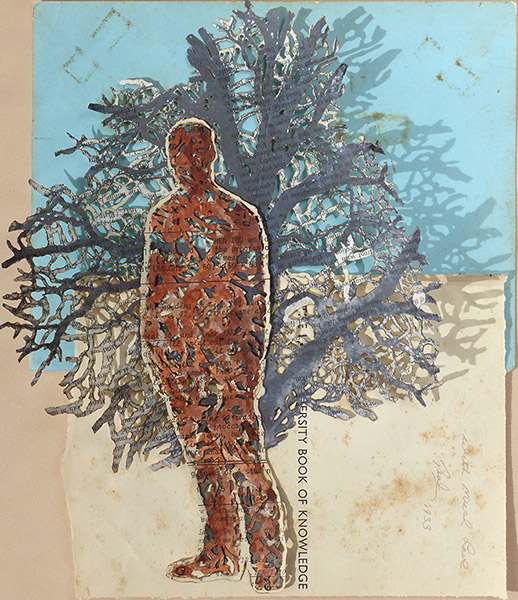
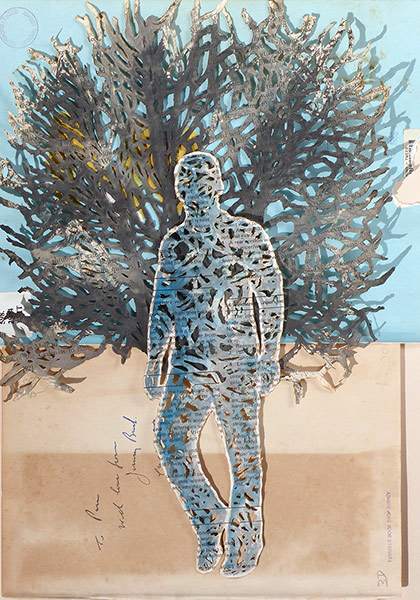
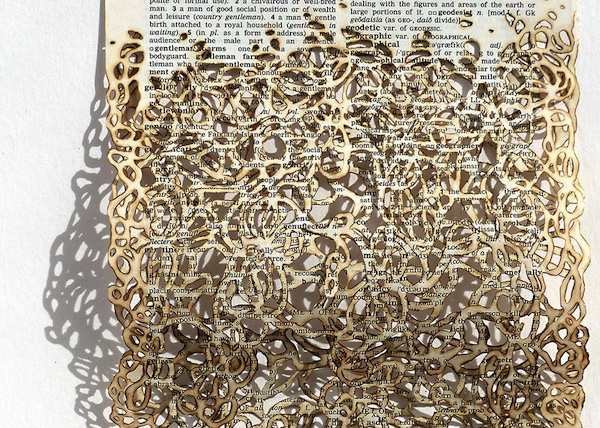
![oxford_innocence[2]](https://www.verandahmagazine.com.au/wp-content/uploads/2015/10/oxford_innocence2.jpg)
Sabine Brosche runs regular workshops. To find out more about her and her artwork go to: sabinebrosche
The post Sabine Brosche – creating art for the heart’s sake appeared first on .
]]>The post Lively Libra New Moon appeared first on .
]]>
Catz by Elin Bogomolnik
A mixed message new moon coming up with Venus in Libra, but Uranus potentially playing havoc, writes Kim Falconer from her 11th House Blog
NEW MOON OCT 12/13th
@19 LIBRA 20‘
LA – Monday – 5:06 pm
NY – Monday – – 8:06 pm
LON– Tuesday – 1:06 am
SYD– Tuesday – 11:06 am
The Libra New Moon is ruled by planet VENUS, goddess of love, art and socially significant unions. Where you have Libra in your chart is where you want to develop aesthetics, harmony, refinement, relationship, affection, attraction, cooperation and live out those authentic core values. Sound elegant and gracious?
It is, except for the Uranus – tip the apple cart – opposition. There is a willful, rebellious, audacious component to this lunar event. It might express in some uncharacteristic ways such as acting out repressed feelings at the most inopportune times. It’s a moon that wants to share. You, and others, might be wildly surprised by what’s on your mind.
The hitch her is that Libra wants to please the company but while she’s saying yes and and obliging, Uranus in opposition is plotting a take over – French revolution style.
Expect relationship longings to awaken, along with your most creative Muse, and a singularly, delightfully demonic trickster. Fun combination!
Check the scopes for sign by sign hints.
![]() ARIES: You will know the shape of your relationships by the health of your body this new moon. It’s pretty simple. Healthy and strong = relationships are solid. Chronic or sudden dis-ease = check your relationships, honestly. What you repress goes straight to the chakras. Purge.
ARIES: You will know the shape of your relationships by the health of your body this new moon. It’s pretty simple. Healthy and strong = relationships are solid. Chronic or sudden dis-ease = check your relationships, honestly. What you repress goes straight to the chakras. Purge.
![]() TAURUS: Bulls need to take their minds off the health and well being plan and put heart and soul into a creative project or desire. The goal is to forget all about your goals and find what feels good. Dreams, etheric as they are, can be excellent guides right now. Journal.
TAURUS: Bulls need to take their minds off the health and well being plan and put heart and soul into a creative project or desire. The goal is to forget all about your goals and find what feels good. Dreams, etheric as they are, can be excellent guides right now. Journal.
![]() GEMINI: With ruling Mercury direct and on the North Lunar Node, the path opens onto a crossroads. All you need to do is tune in to your higher guidance and say YES to the direction that excites you the most. It’s not advance calculus. Just point your nose toward whatever makes your heart beat the fastest.
GEMINI: With ruling Mercury direct and on the North Lunar Node, the path opens onto a crossroads. All you need to do is tune in to your higher guidance and say YES to the direction that excites you the most. It’s not advance calculus. Just point your nose toward whatever makes your heart beat the fastest.
![]() CANCER: Home, family and hearth are in flux right now. You might be moving house (the 2nd most stressful thing you can possibly do) or maybe wishing someone else would. Any cantankerous edge is your ally thought. Take it as a signal for what wants changing. Focus, then act. !
CANCER: Home, family and hearth are in flux right now. You might be moving house (the 2nd most stressful thing you can possibly do) or maybe wishing someone else would. Any cantankerous edge is your ally thought. Take it as a signal for what wants changing. Focus, then act. !
![]() LEO: Your New Moon is in the house of communications where you will find yourself more honest, clear and possibly abrasive than you’ve been in a long time. What starts out as a compliment or genuine praise twists mid-air to critically land on the unsuspecting. Better out than in.
LEO: Your New Moon is in the house of communications where you will find yourself more honest, clear and possibly abrasive than you’ve been in a long time. What starts out as a compliment or genuine praise twists mid-air to critically land on the unsuspecting. Better out than in.
![]() VIRGO: This is your power year with Jupiter in Virgo, currently flanked by Mars and Venus. It’s a sexy, charming and very clever vibe, on that’s going to see offers come floating over your desk. I won’t even mention Tinder. Basically, you’ve got the power. Consider developing a latent talent or resource.
VIRGO: This is your power year with Jupiter in Virgo, currently flanked by Mars and Venus. It’s a sexy, charming and very clever vibe, on that’s going to see offers come floating over your desk. I won’t even mention Tinder. Basically, you’ve got the power. Consider developing a latent talent or resource.
![]() LIBRA: A once a year personal New Moon and there is much to celebrate (especially if your birthday falls within 5 days of this NM). The feeling is freedom AND connection, love AND autonomy, fun AND focus. You’ll want to give a does of energy to both sides of the fence. Piece of cake.
LIBRA: A once a year personal New Moon and there is much to celebrate (especially if your birthday falls within 5 days of this NM). The feeling is freedom AND connection, love AND autonomy, fun AND focus. You’ll want to give a does of energy to both sides of the fence. Piece of cake.
![]() SCORPIO: This time of year brings your ‘shadow’ New Moon. You’ll want to have some quality alone time, tuning into the inner currents of life. If you have a sudden physical complaint, consider (as well as appropriate health care) the emotions attached. Now, *exercise* the demon. (stet).
SCORPIO: This time of year brings your ‘shadow’ New Moon. You’ll want to have some quality alone time, tuning into the inner currents of life. If you have a sudden physical complaint, consider (as well as appropriate health care) the emotions attached. Now, *exercise* the demon. (stet).
![]() SAGITTARIUS: With Saturn newly into your sign and this moon in the house of goals for the future, you take a serious look at what you’re creating. Instead of thinking forward a year or so, take a bigger leap. What would you like your life to be in five years. Plan for that.
SAGITTARIUS: With Saturn newly into your sign and this moon in the house of goals for the future, you take a serious look at what you’re creating. Instead of thinking forward a year or so, take a bigger leap. What would you like your life to be in five years. Plan for that.
![]() CAPRICORN: Career concerns are in your face with this new moon. They appear sweet and helpful, but you suspect the iron fist inside the velvet glove. Torn between compliance and revolt, think first which part of yourself YOU want to win. Is there a way to have both?
CAPRICORN: Career concerns are in your face with this new moon. They appear sweet and helpful, but you suspect the iron fist inside the velvet glove. Torn between compliance and revolt, think first which part of yourself YOU want to win. Is there a way to have both?
![]() AQUARIUS: Expect invitations to travel, speak, teach, lead, play, compete. It’s a fun old time with the new moon in the 9th house of exploration and adventure. Just know that you carry with you that Uranian edge. Feel free to be radical, shocking even. This is no time for norm.
AQUARIUS: Expect invitations to travel, speak, teach, lead, play, compete. It’s a fun old time with the new moon in the 9th house of exploration and adventure. Just know that you carry with you that Uranian edge. Feel free to be radical, shocking even. This is no time for norm.
![]() PISCES: Your emotions are lit up like a Roman candle, hot, creative, dramatic. It’s great if you are being true to yourself, being who you are authentically. But, if you play down your needs so to appease others or keep up appearances, expect change of the volcanic kind.
PISCES: Your emotions are lit up like a Roman candle, hot, creative, dramatic. It’s great if you are being true to yourself, being who you are authentically. But, if you play down your needs so to appease others or keep up appearances, expect change of the volcanic kind.
Happy New Moon, everyone! xxxKim
 Kim Falconer is an author writing urban fantasy, YA fantasy and epic science fantasy novels.
Kim Falconer is an author writing urban fantasy, YA fantasy and epic science fantasy novels.
You can find out more about Kim at the 11th House Blog, and on FaceBook and Twitter.
She also posts at the Supernatural Underground on the 16th of every month and runs Save the Day, a tips and tutorials writerly community.
The post Lively Libra New Moon appeared first on .
]]>The post Harry Mac – a novel of blood and ink, politics and the pen… appeared first on .
]]>Even if you had no idea that Russell Eldridge had ever been a newspaper man – there’s a dead giveaway, the moment you walk into his study. An absolutely utilitarian solid brown wooden desk, of the kind that populated the Fairfax and News Limited offices in the dim and distant pre-computer days.
“You’ve got it in one,” Eldridge says at my instantaneous guess. “It was the sports editor’s desk at the Sydney Morning Herald, and I was working at Fairfax when they were getting rid of them, so I put my hand up.”
The desk, which would have seen many thousands of stories cross its bows before it came into Eldridge’s possession, has certainly seen many since, but none quite as important to its owner has his most recent creation – his first novel, Harry Mac, which came about, he says, almost by accident.
“I’d retired as editor of the Northern Star,” he says, “and I’d actually written a crime novel. I was waiting to hear back from a publisher about it, and I was wondering what to write in the meantime, and suddenly the idea popped into my head. I think it had been sitting there in a little dark corner, but I’d never felt able to address it.”
The ‘it’ he is referring to his is childhood growing up in South Africa during the troubled years of apartheid, and Eldridge’s own experience of his father – the Harry Mac of the title, who was a newspaper editor and had been a POW in Italy during WWII.
“What I wanted to do was to try and distil the essence of those turbulent times,” he says. “When I was growing up in the fifties and sixties South Africa was a regimented society, a place which was still feeling the after-effects of World War II, and of the Boer War – there was the Secret Police, the Afrikaner Boers with their Dutch background, some of the Germans that were still on the side of the Nazis, and those of us from an English background who were caught in this middle-ground – seeing the oppression of the black population and at the same time living very comfortable lives that many of them did not want disturbed.”
The central element of the plot is that young Tom, Harry Mac’s son, overhears his father being told of a political assassination plot, and becomes terrified to think that his father is going to be caught up in what Tom is already sensing is a net of trouble closing in around not just his neighbourhood but the larger world outside.
For Eldridge, the plot was the pivot around which the rest of the book could grow. “It was actually based around the fact that our father had told us about a plot, but he’d dismissed it, but I began to think how that could play out as a fictional story, and that this was also around the time that Mandela was about to be arrested – he even hid in a house in our grandparents’ street at one point – and suddenly everything started to come together.”
It was the idea of how a child might have felt if he had imagined that his father was involved in something dark and dangerous that prompted Eldridge to use a child narrator. “It was liberating to use a child’s voice,” he says. “It allowed me to write about complicated things in a straight-forward way, with no adult baggage or cynicism attached. Of course, I had to pay a lot of attention to keeping up the child’s voice – not allow it to slip into using a more complicated vocabulary and at the same time keep it from being too childish.”
But young Tom has a way with words and a quiet observational skill – not unlike his creator. Working at the Northern Star with Eldridge when he was editor was a pleasure, although he says, he was not really cut out to be editor material.
“I moved to Australia in 1979,” he says. “My older brother had already moved to Australia, and my then wife and I were living near Soweto – close to the middle of the trouble spot for the riots, and I really felt it was time to get out. When we arrived I worked on the Sydney Morning Herald for a few years, and then I discovered the North Coast, and came up here to be a hippy in the hills which was good fun for a couple of years, but I gradually got sucked back into journalism, first of all working as a reporter and then as chief of staff.”
Eldridge was not, he says, automatic Northern Star editor material. “The Star was terribly conservative back in the day,” he says, “I really didn’t fit the bill. I was chief of staff for ten years before I was offered the editorship.” He found working on a local newspaper a rewarding experience. “It has its challenges,” he says. “You feel accountable to the people around you in a way that you don’t when you are working on big city newspapers, and of course it can often test your independence as a journalist.”
Something Eldridge took to heart however, was the importance of belonging to community, and for those of you who haven’t seen him act, he is a fine actor, as well as an active member of the Byron Bay Writers’ Festival Committee, and over the years he has immersed himself in many causes dear to his heart.
Some of the tests of independence Eldridge gives to Harry Mac as he struggles to make sense of the increasingly rigid regime bearing down on them – his mood swings and drinking affecting the Mac family, in particular Tom’s Mum, who treads around her volatile husband cautiously, trying – usually unsuccessfully – to prevent an outburst, or worse, a silent treatment that goes on for weeks.
‘I can’t help feeling the lane where we lived had something to do with it all. As though these families had been put there for a reason… it was so still, like everyone was holding their breath a lot of the time.’
Tom, however has an outlet for his worries – the lane in which he lives, which is populated with a cast of colourful characters, and most specifically his friendship with Millie, a girl slightly older than him. Tom and Millie have a bond – both of them are slightly physically disabled, Tom from the after-effects of polio, and Millie, whose neck is shortened. “I don’t know if Millie’s mother took thalidomide,” Eldridge says, “but I wanted to point to that time as being the peak era for thalidomide and polio, and how children with a physical disability were commonplace – and to create a connection between the idea of these damaged children, and the damaged system in which they were living. For me a central part of the book is the idea of ‘bearing witness’. That is that perhaps as a journalist or writer you are not always on the frontline, but it’s your job to observe and report – and I wanted to bear witness, not just to the dark politics of the day, but also to other, more personal issues.”
There was too, a personal connection with the idea of disability, since Eldridge has suffered on-going after-effects in one leg of an inherited condition similar to polio, although he has not let it stop him from climbing, even including hiking into the foothills of the Himalyas. At the house in Ocean Shores where he lives with his wife Brenda Shero, an artist, designer and writer, the couple have a kayak Eldridge frequently takes on the river, and it’s often, he says, when he’s out on the water that the next step in his writing will come to him.
Which leads me of course to the inevitable question of what he’s working on next. “To be honest the tank feels a bit empty at the moment,” he says, “but what I am very heartened by is the response from a lot of people who are saying they don’t want to let go of the characters – they want to re-visit them.”
In the mean time, of course, there’s always that crime novel sitting in the drawer.
Marele Day will launch Russell Eldridge’s book, Harry Mac at the Launch Pad at the BBWF on Saturday August 8 at 3.00pm. For more information on the Festival go to www.byronbaywritersfestival.com
Harry Mac is published by Allen & Unwin: https://www.allenandunwin.com/browse/books/fiction/Harry-Mac-Russell-Eldridge-9781760113209
The post Harry Mac – a novel of blood and ink, politics and the pen… appeared first on .
]]>The post Painter Sally Gabori’s work lives on in Pat Corrigan’s latest book appeared first on .
]]>Arts philanthropist and indigenous art collector Pat Corrigan AM, remembers vividly the moment he saw his first Sally Gabori painting.
“I remember the day well,” he says. “I wandered into the Woollongabba Gallery in Brisbane, and there was a painting by Sally Gabori which I really loved. It was the vibrant colours that first drew me in, and once I started researching her I knew that I wanted to get more of her work – I was absolutely blown away by her output and her originality. I had no idea at the time that she was already 85. I’m not a clinical collector, I go on gut feelings rather than logic, and it was an instinctive reaction to her work that pulled me in to start my Gabori collection.”
In May this year that collection was launched in a beautiful book – and it was my privilege to be involved in the project, as editor and as a contributor. The book, Gabori – the Corrigan Collection of Paintings by Sally Gabori, was published by Macmillan and at the launch in Melbourne, the Chair of the Australia Council for the Arts, Rupert Myer, AM, also expressed the effect the sighting of his first Gabori had on him: “It was on an extreme angle,” he recalled, “and the effect of all of the energy and vitality of the work was both compacted and amplified. I thought I would count the colours – I could see yellow, gold, white, cream, red, pink, blue, aqua, magenta, fuschia, purple, crimson, lilac and orange…and there were more.”
It was actually through another Pat Corrigan book, Power + Colour: New Painting from the Corrigan Collection of 21st Century Aboriginal Art, which was published in 2013, a book I reviewed for the Sydney Morning Herald, that I first saw a Gabori. The book featured 129 paintings by 76 artists from more than 25 remote communities across the country, and for me Gabori’s work was a stand-out.
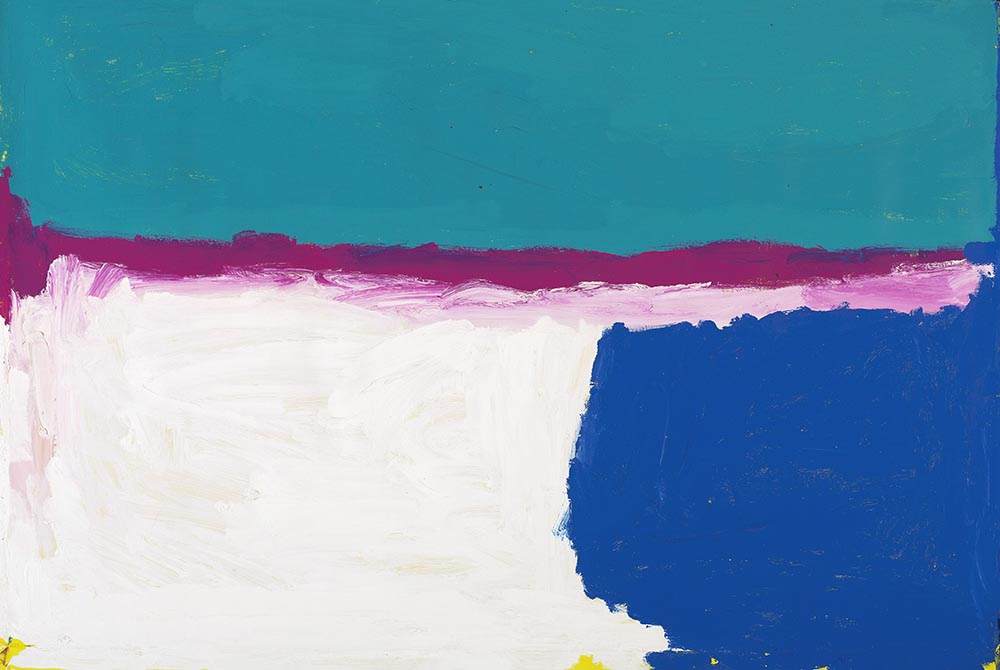
Sally Gabori: ‘Dibirdibi Country’ 2009. “This ia big saltpan on my husband’s country on Bentinck Island.”
A few months later seeing a vast Gabori canvas at GOMA in Brisbane, I had an almost physical response to her work – I simply wanted to fall into it, to be embraced by its vast space, its rapturous embodiment of landscape, of scale and colour and time. I had never met Pat but I was intrigued when Terry Greer, his business partner in the Sydney bookshop in King Street, Newtown, Better Read than Dead, suggested that I might like to be involved in the Gabori book, for which the esteemed writer and curator Djon Mundine was writing the major work.
It’s not often that a project offers nothing but pleasure – but this one did. I still remember how I felt first reading Mundine’s wonderful words – for example: For me, the answer lies in the idea that great art speaks not only to the time of its creation, but also to the timeless heart of human nature. Somehow, at the age of 80, Gabori suddenly understood how to translate into art the difficult and wonderful spaces – both emotional and physical – that she had travelled through in her lifetime. She brought a visceral, heartfelt energy to her paintings that speak to all who see them.
So who was Gabori? And why is her art so extraordinary that she is in major collections around the world when she painted for only seven years.
As a child, Mirdidingkingathi Juwarnda – Sally Gabori – grew up on an island, Bentinck Island, one of the South Wellesley group of Islands, located in the Gulf of Carpentaria. Like generations of children before her, she was supported by tribal lore and custom in the close-knit community – as she grew she was taught her dreaming, and learned about her Dolphin totem. She learned to fish, and to care for the rock walls on the island, and to weave – absorbing her home deep into the psyche of her being. When she was 15 she was married to her husband Pat Gabori, and as a woman joined them in their work of hunter-gathering. (One of the great joys of this book is that it also contains hundreds of photographs of Mornington Island, Gabori, her family and island life, many of them by photographer David Rosendahl and artist Fiona Foley.)
All around her, the Kaiadilt continued their hunter-gathering tradition uninterrupted by any outsider, and always observing their island – its landscape, weather patterns and flora and fauna. In this minute observation lay, many decades later, Sally Gabori’s extraordinary ability to connect a knowledge of place with a deep emotional connection. For the Kaiadilt, everything on their island was of utmost importance, from the tiniest rock to the mangrove flats and beaches – there’s a phrase used by them which translates as ‘much eye me’. It’s a phrase that embodies their minute observations of the landscape, including the tiniest and least dramatic places.
But when a drought hit the region in 1942-45, it gave the missionaries on Mornington Island the chance to remove some of the neighbouring Kaiadilt from nearby Sweers Island to the Presbyterian mission on Mornington. In 1948 a cyclone destroyed the permanent water source on Bentinck, and Mirdidingkingathi, at the age of 24, was removed along with the remaining 63 Kaiadilt on the island, including her ‘sisters’, Dawn Naranatjil, May Moodoonuthi and her niece Paula Paul, to Mornington Island.
One of the aspects of Gabori’s work that Corrigan appreciates is the emphasis on family, and he understands too, the losses and tragedies that Gabori has faced during her long lifetime. “Sally comes from a huge extended family,” he says. “And that is reflected in her works. She gives them titles such as ‘This is my father’s land’, ‘this is my brother’s land’, ‘these are the mudflats on Bentinck Island’,” he says, “and somehow they just bring more life to these vibrant paintings. You begin to understand the deep emotion running through them.”
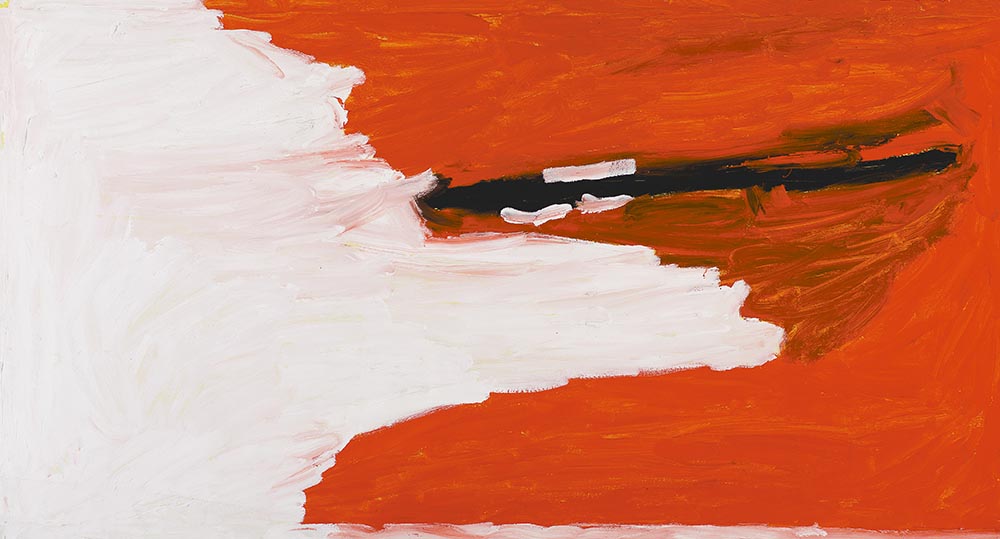
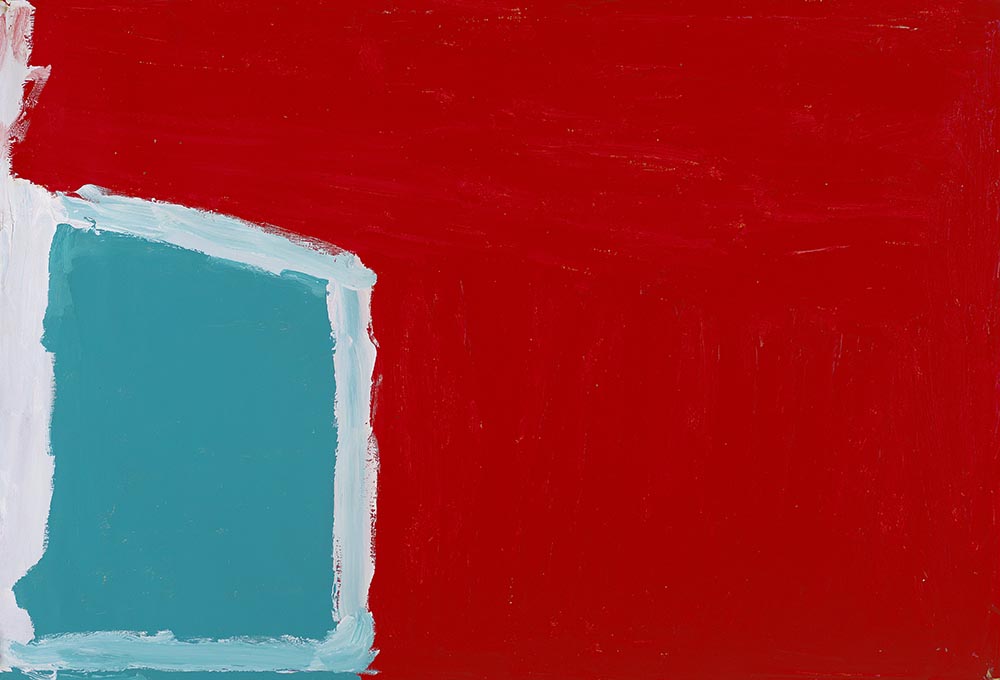
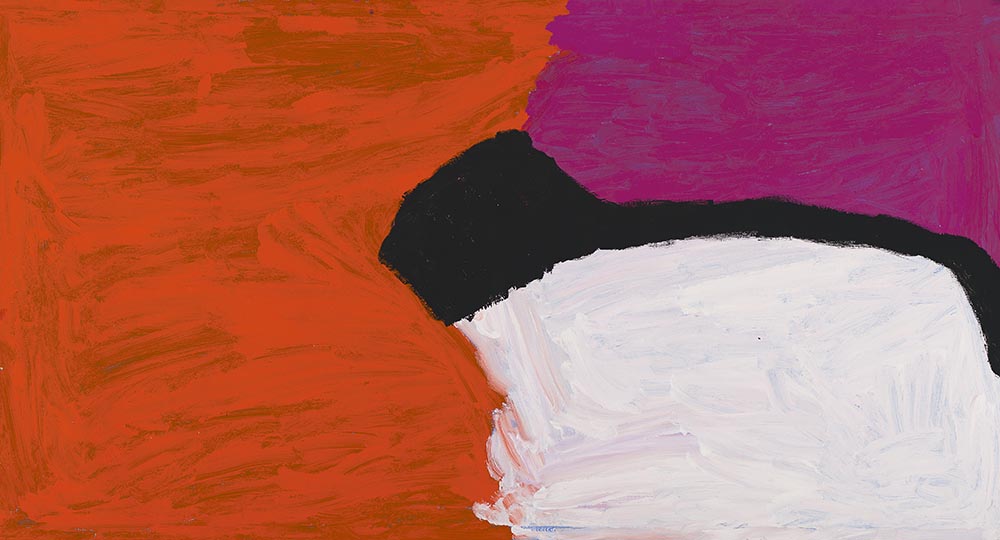
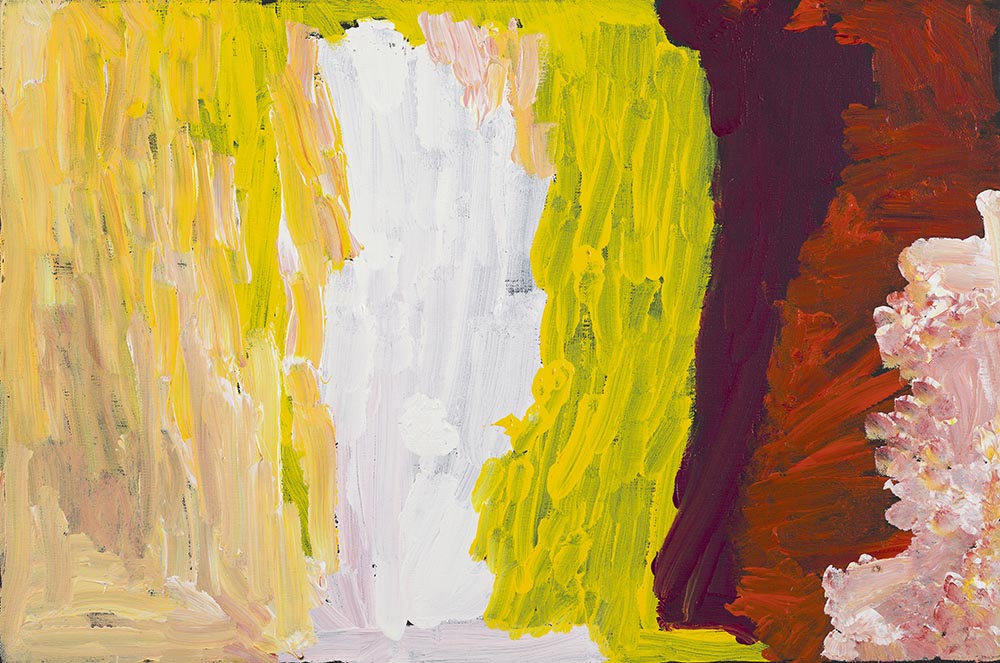
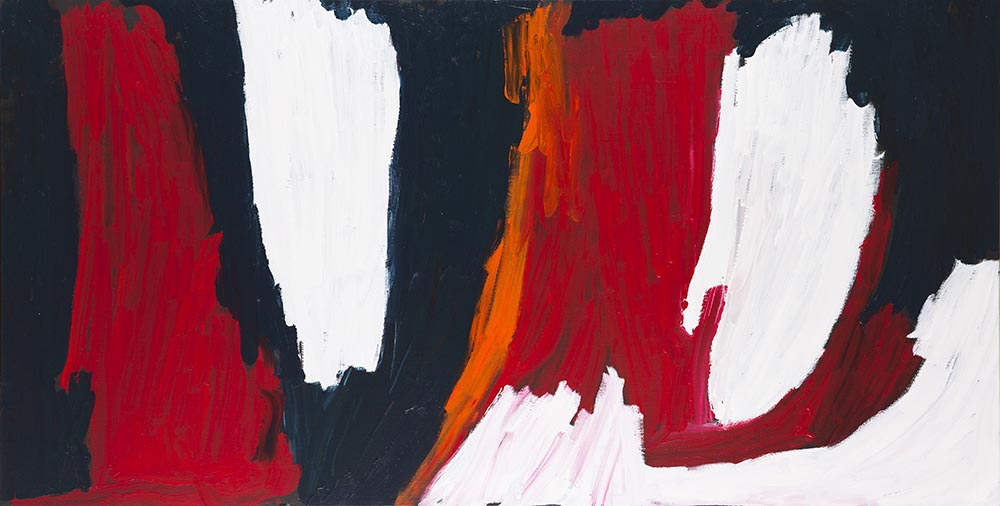
Sally Gabori: Top; ‘Dibirdibi Country’ 2010: “This is the big saltpan on my husband’s country on Bentinck Island.” Middle row, ‘Dibirdibi Country’ 2008: “This is a freshwater hunting ground on my husband’s country on Bentinck Island.” Middle, ‘Dibirdibi Country,’ 2009 (detail). Right, ‘Dibirdibi Country’ 2013: “This is my husband’s country on Bentinck Island. This is the saltpan that runs across it.” Bottom, ‘Dibirdibi Country’ 2012: “This is saltpan country where there are iron stone rocks and mangrove swamps.”
Corrigan, at 82, is approximately the same age Gabori was when she first entered the Mornington Island Arts Centre and created her first painting. She produced on average almost a painting a day over five years, becoming an international art sensation in the process and although she sadly passed away before the book was published, in Corrigan she has a champion in her corner who is working every bit as hard on the consolidation of her career as she did on the creation of the works.
Corrigan’s artistic interests are wide-spread. As well as being a jazz aficionado from way back, he is also a book collector of note and in 2012 bought the Sydney bookshop Better Read Than Dead. But it is the art that most occupies his time and his passion – his Darling Point apartment overflowing with everybody from Lloyd Rees to Michael Zavros, not to mention of course, numerous paintings and prints from Aboriginal artists. With a personal collection of over 2,000 works he has also donated over 1,000 works to more than 45 Cultural Gift Recipients nationwide. Corrigan and his wife, Barbara, divide their time between the Darling Point apartment and their home on the Gold Coast, where Corrigan has been chairman of the Gold Coast City Gallery for many years, and is also a former chairman of its Foundation.
For him, the book is not just a way to show off the art – but also to keep alive the importance of Indigenous traditions and culture. Something Rupert Myer also noted, when he said: “It may seem that the launch of a book on a single indigenous artist won’t change anything. I disagree. It’s about the cumulative effect. And each one of us has a part to play in the development of that narrative and advocacy.”
Ultimately, says Corrigan, “I hope this book will be a way for every art and book lover in Australia to learn more about this extraordinary artist.”
Gabori – the Corrigan Collection of paintings by Sally Gabori is published by Macmillan. Text by Djon Mundine and Candida Baker. 224pp, rrp $99.99. Purchase the book here: Gabori-The-Corrigan-Collection-of-Paintings
The post Painter Sally Gabori’s work lives on in Pat Corrigan’s latest book appeared first on .
]]>The post Marking time – Robert Drewe on toilet graffitti through the ages appeared first on .
]]>I’m no psychoanalyst, but what’s behind the impulse that makes some people think: “Gosh, I badly need to go to the toilet. But hold on a minute, I’d better take a marker pen with me.” It’s puzzling.
We’re talking public toilets, of course, and the longstanding human need to write crude or pornographic messages on their walls and doors. Furthermore, in order to further express one’s righteous anger at the world’s unfairness, what a good idea it would be to tear the toilet seat off its hinges and block the system with toilet rolls.
Has there ever been a public lavatory that hasn’t been the subject of toilet rage? So why does this anger exist? You’d think if the perpetrators really hated that necessary amenity, they’d be in and out of there pretty smartly.
Toilet wit and imagination are another thing, however. Being fortunate enough to have this column as a creative outlet, I’ve never felt the need to write personal messages to unknown future toilet visitors, or draw exaggerated genitalia for the creative appreciation of forthcoming patrons.
But many people obviously have this deeply felt want, and always have, as I was reminded by Professor Mary Beard’s SBS program, Meet The Romans. When Pompeii was consumed by the eruption of Mount Vesuvius in 79 AD, and frozen in time, many buildings were so well preserved that archaeologists – and tourists — today can still read the graffiti and see the phalluses and acts of congress the Romans scrawled everywhere on their lavatory walls.
Any of these examples remind you of a 21st century public-toilet wall? Only the cleanest ones have been selected here. (Those Romans!)
“Phileros is a eunuch.” (Written by an enemy?)
“Oppius, you’re a clown, a thief, and a cheap crook.” (Ditto.)
“Celadus makes the girls moan.” (Obviously written by Celadus.)
“The man I am having dinner with is a barbarian.” (An unhappy date?)
“To the one defecating here, beware of the curse. If you look down on this curse, may you have an angry Jupiter for an enemy.” (Goodness knows.)
“Floronius, privileged soldier of the 7th Legion, was here last night. Only six women came to know him, too few for such a stallion.” (Definitely written by Floronius.)
“Virgula to her Tertius — you are one horny lad.” (Either a happy girlfriend or Tertius himself.)
“Virgula to Tertius again — You are a nasty boy.” (Probably her that time.)
“Virgula to Tertius — You got me pregnant.” (Definitely her that time.)
Unsurprisingly, the wittiest graffiti is usually found in university toilets. Such perpetrators like to air their recent lectures in philosophy (Nietzsche crops up a lot), have time on their hands, strong opinions — and a ready supply of marker pens. People committed to a political candidate may write propaganda on a loo wall. (Swastikas and peace symbols are equally popular.) Football fans may also cheer on their teams in this manner.
As in Roman times, of course, many people want to publicise negative facts about others. A dumped lover may advertise the fact that “Darren has herpes”. What better place to announce it than in the recognized public square for all matters crude and disgusting.
Meanwhile, as the old idea of a romantic lad carving his and his girlfriend’s name on the bark of a tree has faded with the forests, statements of love these days (“Lachlan 4 Ruby 4 Ever”) are likely to be found in a high school toilet stall.
Then there’s these recently reported contemporary messages:
“Don’t date a guy unless he buys you stuff.” (Sage advice in the local surf club’s Ladies’ loo.)
“My girlfriend follows me everywhere.”
“No, I don’t.” (On the wall of the club’s Gents’.)
In my lifetime, the everyday word for the particular convenience has changed from lavatory, to toilet, to loo. Delicate American sensibilities prefer “going to the bathroom” (where, oddly, there’s no bath) or “the restroom” (which, strangely, contains nowhere to relax). Other twee expressions include “the little girls’ room” where one goes to “powder your nose”.
If someone asks to use “the WC” (for water closet), they’re probably from yesteryear. “Loo” originated in Britain, where “lavatory” is also preferred over “toilet” by well-bred types, some of whom might also ask to “use the facilities”.
Not my grandmother: she chose instead to “spend a penny”. But I doubt she took a pen with her.
Robert Drewe’s most recent books The Local Wildlife and Swimming to the Moon are on sale here: penguin.com.au.local-wildlife
The post Marking time – Robert Drewe on toilet graffitti through the ages appeared first on .
]]>The post Mandy Nolan explores the idea of home sweet home appeared first on .
]]>To be honest, I’m not sure how Mandy Nolan finds time to do everything she does. She’s had three books out in less than two years; she makes regular comedy appearances around the country; she writes for the Byron Shire Echo, and she keeps a clean and tidy house.
I know this last for a fact from visiting her to interview her about her last book, Boyfriends We’ve All Had (But Shouldn’t Have), but it’s handy information to have whilst reviewing her latest comedic memoir, Home Truths, because Nolan’s line from her childhood home to the light and airy Mullumbimby house where she lives with her husband and more than several children, has been anything but straight.
In fact it’s hard to imagine that the young woman in a squalid shared house in Brisbane where they didn’t train the cat to use the kitty litter because it was ‘too much trouble’, where people drank until dawn, and slept where they fell, is the same house-proud somewhat OCD Mumma Bear juggling multiple careers that Nolan has blossomed into over the years.
One wonderful recollection of the shared house was their attitude to locking it up – they didn’t. But coming home one night from a Nick Cave concert, they found a male intruder leaving the house…The stranger wasn’t remotely apologetic. Instead he looked at the bunch of mismatched punk, new romantic and swampy girls and snarled, “You don’t even have tea.’ He was right.’
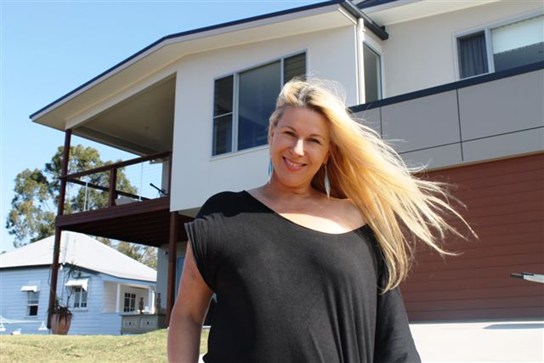
Comedian, author and proud house-owner Mandy Nolan outside her Tallowood Ridge home, at Mullumbimby.
The book follows the trajectory of homes Nolan has known from childhood to now, shattering a few misty-eyed myths along the way. The idea, for instance, that we think fondly (mostly) of where we grew up, is given short shrift by Nolan, who lambasts the little Queensland town of Wondai, and in her frank and forthright fashion labels it simply a ‘shithole’, although, in the kindest sentence she has towards where she grew up she adds: Sure it’s a shithole. But it’s my shithole. (When Nolan wrote her first anti-Wondai piece she was bombarded with angry letters, emails and facebook comments. You should be ashammed of yourself, wrote one woman. Nolan, of course, couldn’t help herself, she wrote back correcting her critic’s spelling.)
But Wondai, in a sense, did lay the foundation for this book, because according to Nolan it was responsible for leaving her with a very specific syndrome – The Fear of Missing Out on Living Somewhere Better. It’s that sense of endless questing for ‘home’ whatever it means, which raises the book from simply a funny memoir to a philosophical look at what ‘home’ means to all of us, as the place that helps form our personalities and behaviours – for better or worse – and the kinds of homes we grow out of, and into, during our lives.
Not unnaturally a lot of the book is devoted to the house she lives in now, which was purpose-built, and took over three years to complete. The process allows Nolan to be at her rampant best as she writes about the endless frustrations of building – and the strange obsessions of a home-builder. Taps, for instance, cornices and decks all get a good workout.
There’s a great chapter on what Nolan calls ‘Feng Shite’ – and I’ll leave you to work out Nolan’s position on that particular philosophy yourself. It’s almost impossible when reading this book, not to give a (wry) smile of acknowledgement at the familiar family topics she covers. Pet ownership and houses, for instance – the differences between cats and dogs, the sadness of losing pets, the happiness of getting new ones and whether pets should be ‘inside’ or ‘outside’ pets is familiar territory to many of us, as is much else in the book, including a long treatise on the Single Sock Syndrome – a subject which has mystified those in charge of the family washing for decades.
Sensibly perhaps, Nolan doesn’t take many digs at her adopted hometown of Mullumbimby. (After all this is the town that tried to fight off an invading Woolworths grocery store with a T-shirt that said ‘It’s Ground Zero all over again’, so I personally wouldn’t want to be on the wrong side of Mullumbytes, as they’re affectionately known.) And the most moving part – in the emotional rather than the locomotive sense – of the book is Nolan’s description of how she came to realise that this area of the Northern Rivers was ‘home’ to her, and that home is quite definitely where the heart is.
Nolan, as usual, strikes a delicate between outright rudeness, a light-comic touch and a broad humanitarian take on the domestic issues that affect us all. And as we know, there’s no place like emoh ruo.
Mandy Nolan’s Home Truths is published by Finch Publishing. RRP $24.99, e-book $9.99 available from bookstores and online: finch.com.au/books/home-truths
The post Mandy Nolan explores the idea of home sweet home appeared first on .
]]>